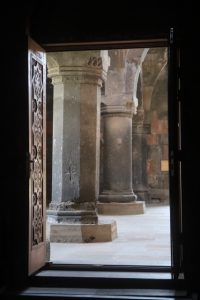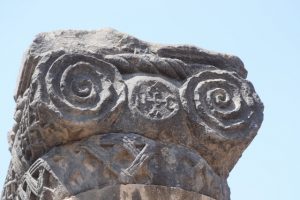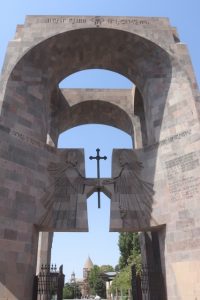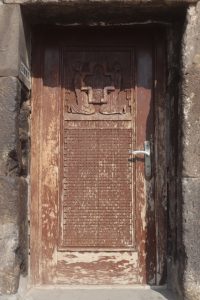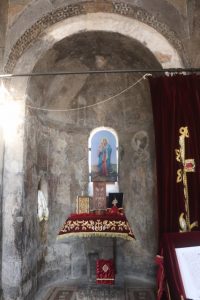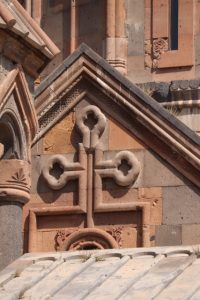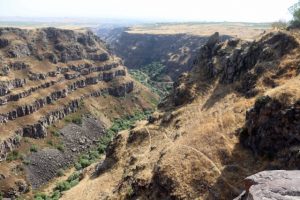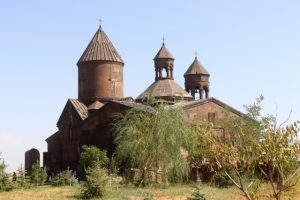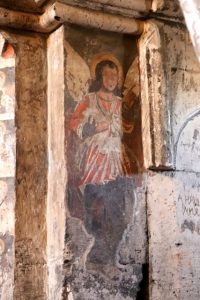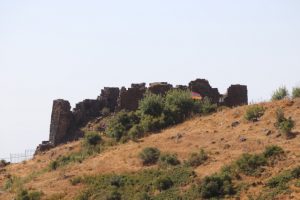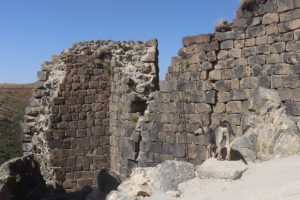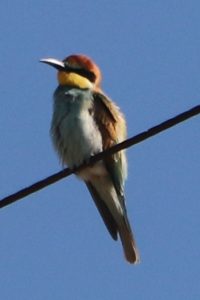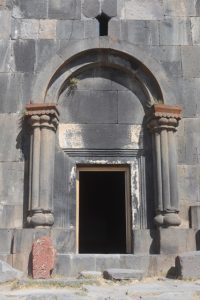Outside Yerevan, braise yourself for the many churches and monasteries, that are in the program! We start in the area around Ashtarak, where we find a variety of construction types, not only churches.
We have secured wheels again, for the next two weeks. Not a large 4×4 monster, not really necessary on the Armenian roads – or so they say. Although I generally prefer to travel by public transport, a car allows us to do so much more in the relatively short time we have.
We start to the NE of Yerevan, where the impressive ruins of the Zvarnots Cathedral have been ‘rediscovered’. Or so goes the story. The Cathedral was built in the 7th Century, but it was destroyed by an earthquake some 320 years later. And apparently, nothing was done with it until it was rediscovered and excavated between 1900-1907, and partly restored in the 1940s. To be turned into a major tourist attraction; we haven’t seen much of them yet, but here we spot the first busses full of Russians.
The same busses seem to follow us to Etchmiadzin, the spiritual centre of Armenian Christians. This is really an enormous religious compound, with a seminary, residencies for monks and for the patriarch, and a museum containing several relics – like a lance that pierced the side of Christ and original wood from Noah’s ark. It is in fact a modern complex, constantly being renewed and improved; the cathedral here is originally from the 4th C, but extensively rebuild in the 17th C, and now closed once more for further construction. Although a must-see according to the guide books, altogether actually not all that interesting, or it must be for the tasteful modern additions, like the gate from 2001.
The town of Ashtarak is in the program, as lunch stop, and for the tiny church of Karmravor, which – uniquely – is almost unaltered since its construction in the 7th Century. The church is closed, but unlike our earlier experience in Georgia, a caretaker turns up within minutes, to let us in. And make us admire the remains of frescoes, which apparently also date back to the 7th Century. Around the church is an extensive collection of ancient Kachkars, the Armenian intricately carved stelae depicting a cross, and sometimes other symbols.
North of Ashtarak the countryside is dominated by the Kasakh gorge, which forms the setting for two more monasteries. Hovhannavank is the nicest of the two, whilst Saghmosavank provides the more spectacular views over the gorge. At both monasteries carving is the dominant form of decoration, frescos are much rarer. Early Medieval Armenian churches like these have a gavit, which is a vaulted entrance cum assembly hall cum mausoleum. The individual pillars here have crosses carved in them, but also the outer walls support decorative stones, or stones with extensive writing. We are being told that the simple crosses both inside and outside are from people who have stayed in the area, and wanted to leave their mark. Graffiti avant la letter, perhaps? A lot less invasive than graffiti, in fact: the crosses, different forms of them, are fitting into the structure quite nicely.
For the last church we visit, we need to climb – by car – to Ambred. Here are the remains of a 12th C fortress, which is really just a ruin, with the occasional piece of wall still standing, and perched on a ledge, the church, named after Saint Astvatsatsin and apparently 10th C. On a clear day, so my guidebook tells me, you have a spectacular view from the access road of the castle and the church against the background of Mount Ararat. Unfortunately, it is not a very clear day.
Next: Gyumri
